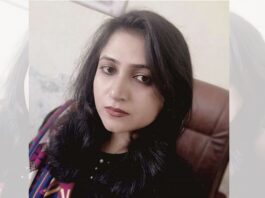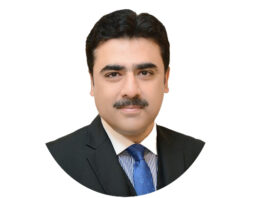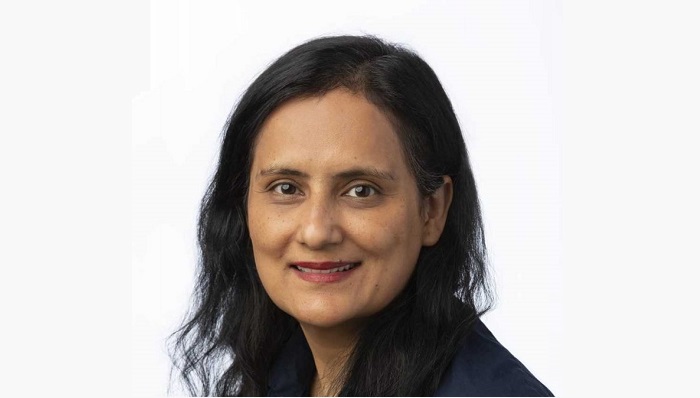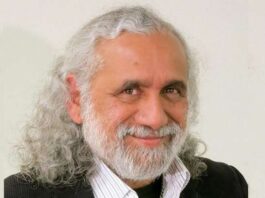(The author is a Ph.D. in Media Studies from Punjab University Lahore working as Producer Programmes/Scripts Editor at PTV-Home, Islamabad)
After the inception of Pakistan, there was a new era of filmmaking. In united India, the filmmaking took place in Lahore and Bombay, and some other cities of present Pakistan and India, but mostly Indian artists used to perform in those movies. After the partition, many Hindu filmmakers and directors from Lahore migrated to India, and likewise, several producers, technicians, and actors shifted to Lahore. In those times, films used to release on both sides, which maintained the atmosphere of competition.
In the film studios of Lahore, the owners, while migrating, took much of the technical equipment and damaged the rest of the things. Lahore had only a couple of working studios named Malka and Shah Noor film studios. In the same manner, there were only dozens of cinemas here. Syed Sibtain Fazal hailing from India, started working with a Hindu filmmaker Diwan Sardari Laal already present here, along with the famous artist couple of Sawarn Lata and Nazeer.
The first Urdu movie Teri Yaad with Asha Poslay as the heroine, was completed and exhibited by Diwan Sardari Laal, ran successfully and opened the way to filmmaking. The movies made in Lahore were simultaneously released across Pakistan and India, making this field competitive and providing a vast market. Moreover, filmmakers, producers, directors, and artists used to work diligently and keenly.
Hence after the inception of Pakistan, some Punjabi films like Bhangra, Kartar Singh, and Dopatta contributed a lot to strengthening film studios. The initial singers and performers were Surayya Begum, Noor Jehan, and Zubeda Khanum, while later included Mehdi Hasan, Naseem Begum, Mala Begum, Amanat Ali Khan, Fateh Ali Khan, Roshan Ara Begum, Malka Pukhraj, Saleem Raza, Masood Rana, Ahmad Rushdi, Akhlaq Ahmad, Asad Amanat Ali Khan, Runa Laila, Naheed Akhtar, Farida Khanam and Iqbal Bano. Thus the first decade laid a good foundation for the Pakistani film industry.
It is pertinent to mention here that the first-ever singer-actress of the Indo-Pak subcontinent Surayya Begum, earned the title of first Malka-e-Tarannum. Many of the actors in those days were singers, too, which include Noor Jahan and Saleem Raza especially.
The rise of Pakistani films spread from 1960 to 1985, during which many films achieved success due to the creative people behind them. Many Punjabi films then were blockbusters and attracted a large number of cine-goers. There was a time Lahore and Karachi had 350 and 400 cinema houses, respectively.
This climax period had prominent films like Dopatta, Yakkay Wali, Naila, Buzdil, Koan Kisi Ka, Arman, Bao Ji, Badnam, Umrao Jaan Ada, Ghirana, Aadami, Insaniyat, Jadugarni, Intizaar, Darshan, Ameer, Tumhi Ho Mehboob Meray, Dhee Rani, Sala Sahib, Babul Da Wehra, Nokar Vohti Da, Ziddi, Banarsi Thag, Mera Naam Hay Muhabbat, Warrant, Banaday Da Puttar, Rangeela Munawar Zareef, Parday Main Rehnay Do, Yadain, Sheeshay Ka Ghar, Phannay Khan, Aag, Aag Ka Darya, Sajnn Dour Deya, Mera Ghar Meri Jannat, Khushboo, Rani Beti Raaj Karay Gi, Soorat Aur Seerat, Dillagi, Dulhan Aik Raat Ki, Tipu Sultan, Haider Ali, Jabroo, Sassi Punno, But Shikan, Nangay Paon, Malik Tay Nokar, Chore Machaey Shore, Insaaf Aur Qanoon, Chan Makhna, Sajan Piyara, Duniya Matlab Di, Farangi, Dia Aur Toofan, Rangeela, Do Rangeelay, Maula Jatt, Zeenat, Bahu Rani, Takrao, Tum Milay Piyar Mila, Bharya Mela, Undata, Waryam, Visa Dubai Da, Landa Bazar, Dillan Day Sauday, Siddha Rasta, Jeenay Ki Saza, Chouriyaan, Nadan, Pehchan, Chakori, Charda Sooraj, Wehshi Jatt, Maghroor, Bhool, Farz Aur Mamta, Sar-Phira, Talash, Mr 420, Dushman Ki Talash, Deedar, Muhabbat Aur Zindagi, Shareef Badmaash, Tum Salamat Raho, Jab Jab Phool Khilay, Shokan Melay Di and many other Urdu and Punjabi films were the pillar of success of Pakistani film industry.
The artists, actors, actresses, and performers who contributed to this victory included Sabiha, Santosh, Noor Jahan, Shamim Ara, Deeba Begum, Zeba, Rani, Mumtaz, Mustafa Qureshi, Ejaz Durrani, Naghma, Agha Tallish, Alauddin, Zeenat Begum, Saiqa, Neelo, Asia, Waheed Murad, Habib, Muhammad Ali, Asif Khan, Santosh Kumar, Shabnam And Musarat Shaheen, Yusaf Khan, Akmal, Mazhar Shah, Aslam Pervez, Rangeela, Munawar Zareef, Shahid, Sudheer, Ali Ejaz, Nanha, Afzal Ahmad, Ilyas Kashmiri, Sultan Rahi, Anjuman, Neeli, Jawed Sheikh, Babra Shareef, Reema, Badar Munir, Nadeem, Shan, Babar Ali, Rambo Sahiba, Madiha Shah, Moammar Rana and many other contributed to the fame of films.
Among filmmakers and directors, Shabab Kairanvi, Ataullah Shah, Luqman, M A Rasheed, Mian Khalid Feroz, Iftikhar Khan, S M Yusaf, Iqbal Yusaf, Mumtaz Ali Khan, Iqbal Kashmiri, Daud Butt, Aslam Dar, Jamshed Naqvi, Hasan Askari, Younas Malik, Sarwar Bhatti, K Khurshid, Syed Noor, S Suleman, Shera, M J Rana, Kaifi, Altaf Hussain, Sibtain Fazli, Riaz Shahid, Nazar Shabab, Zafar Shabab are prominent.
As far as the music directors are concerned, Firoz Nizami, Inayat Hussain, Abdullah, G A Chishti, M Asharaf, Kamal Ahmad, M Arshad, and some others composed popular songs for films. Whereas famous film poets included Shabab Kairanvi, Khawaja Pervez, Masroor Anwar, Saeed Gilani, Ahmad Rahi, and Agha Hasan.
The singers who played back and left unforgettable melodies to listeners were Ahmad Rushdi, Masood Rana, Mehdi Hasan, Akhlaq Ahmad, Asad Amant Ali, Mala, Naseem Begum, Noor Jehan, Tarannum Naz, Afshan Begum, Runa Laila, and Naheed Akhter.
In the Pakistan Film industry, the area of MacLeod and Abbot road was a hub of movies exhibition with a quality cinema market where many films celebrated the Silver, Golden, and diamond jubilee. The longest-running movies include the Urdu film Ainaa and the Punjabi film Maula Jatt and Chooriyan still have this record.
The rise of the Pakistan Film industry started in 1990 when Amritsar TV in India started airing movies watched in Pakistan as well. It created a race of remakes of successful movies from both sides. Then there came the trend of dubbing Urdu in Punjabi and vice versa both in Lahore and Karachi.
There came a period when educated and learned filmmakers disappeared, and many other financers landed into the market with films based on the caste system and hooliganism. Moreover, obscene dance and vulgar songs also discouraged families.
Meanwhile, a mafia started importing films from India for exhibition illegally with the claim of saving the industry. Thus, the local industry started diminishing. In this wake, many modern cinemas were developed, which began to increase and fixed higher ticket rates with the waiver of taxes on films.
The minimum ticket was raised from 2, 3, and 5 rupees to 50 to 300 rupees. This eliminated poor moviegoers who used to watch every first show of a new movie, whereas cinema owners became richer.
After the exhibition of Indian movies, local films started flopping, and the makers had to agitate, but that even did not work. The persons very vocal against the exhibition of Indian movies were Yusaf khan, Aslam Dar and Syed Noor, Jamshed Naqvi, Abdul Rasheed, Shan, Ghulam Mohiuddun, Nadeem and Mustafa Quraishi, while an opportunist segment supported the exhibition of Indian movies and criticized the poor standard of local films.
As time passed, the number of a film released went down from 75 to 25 or even one movie a month lately. Some television artists and directors from Karachi came forward to make and release movies, especially on Eid-ul-Fitr and Eid-ul-Azha, but those were termed as the long plays of TV, not films. However, the film industry shifted to Karachi from Lahore, and studios in Lahore went barren and unproductive.
Syed Noor and Pervez Kaleem voiced against this dismal situation, but still, in Lahore, Cinemas are closed, studios locked, and artists are idle. There is neither any hope of betterment in the coming days. At present, even famous and successful director like Syed Noor is helpless. Two new films by Pervez Kaleem have not been exhibited still. It’s quite difficult to produce and release the film now a day, and that’s why senior filmmakers are now reluctant.
Many famous actors and actresses are unemployed and have a stressful life, while others have started some businesses for a living. Several film directors are out of work now, some are retired, and many are no more alive. Directors like Aslam dar, Daud butt, Younus malik, and Iqbal Kashmiri left the world with the hope of revival of Pakistani cinema. Only Syed Noor and Altaf Husain are still struggling and are optimistic, but their hopes are not bearing fruit.
In Lahore, the condition of film studios is pathetic now. Shah Noor studio, which was nourished by Shaukat Rizvi, and Bari studio, one of the largest in Asia, has not been maintained by the offsprings of Bari malik. Likewise, Agha G A Gull established Ever-new Studios, but due to the tussle between his sons Shezad and Sajjad, it is also not flourishing. Their studio is only producing some commercials and advertisements presently. Malik and Z M films studios have already met their end.
- The Rise And Fall Of The Pakistan Film Industry - 06/02/2023
- Media or “Madia” - 08/01/2023





